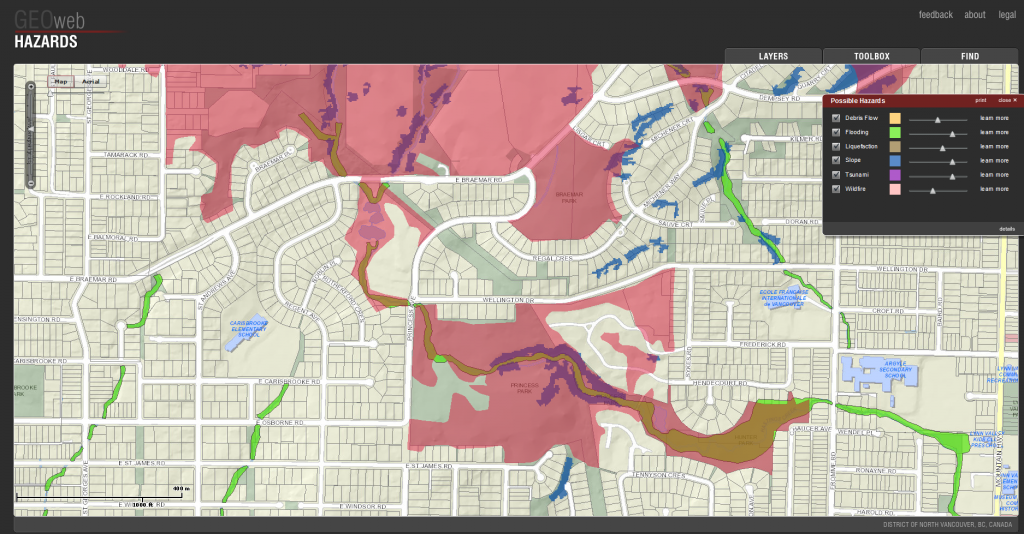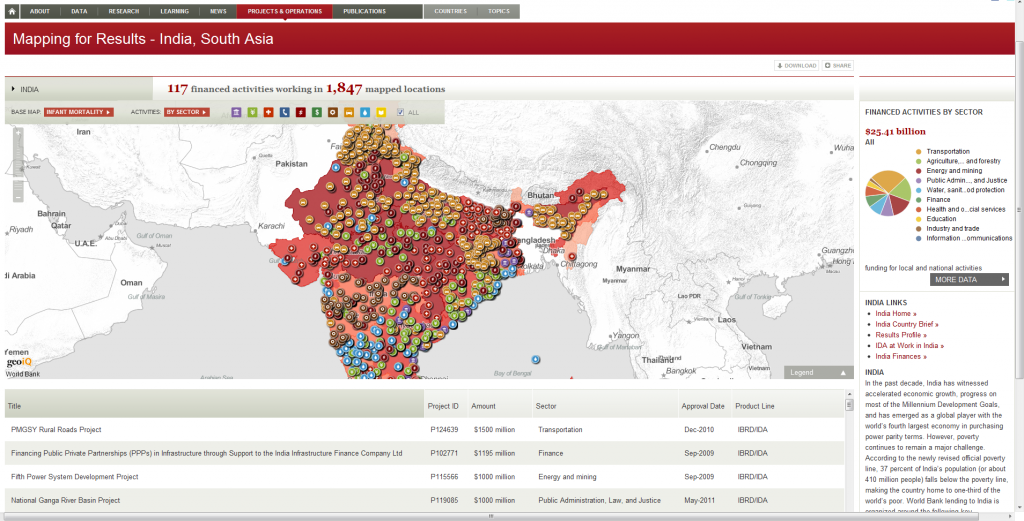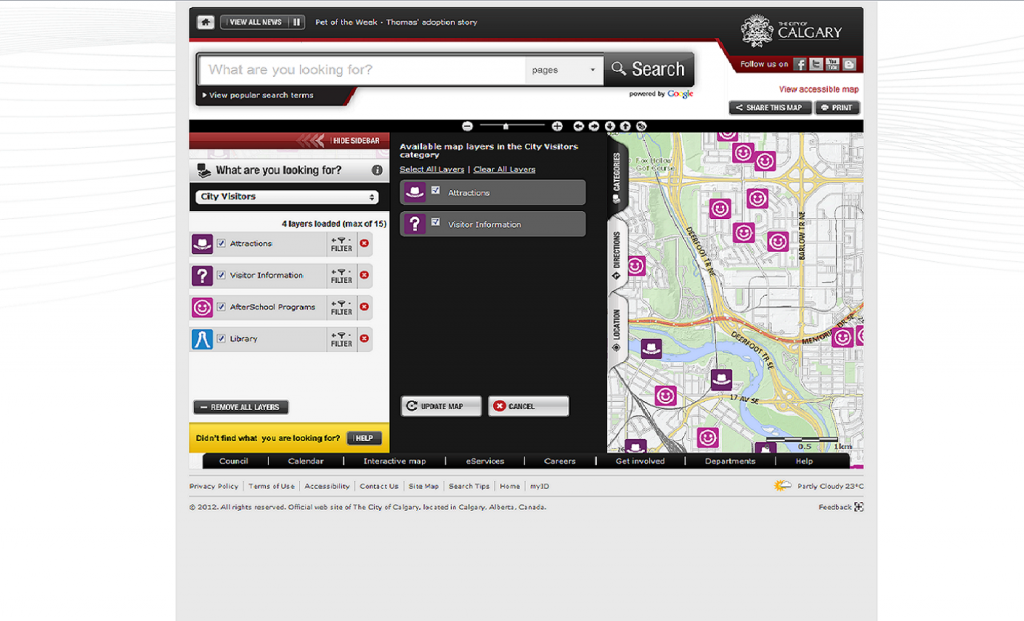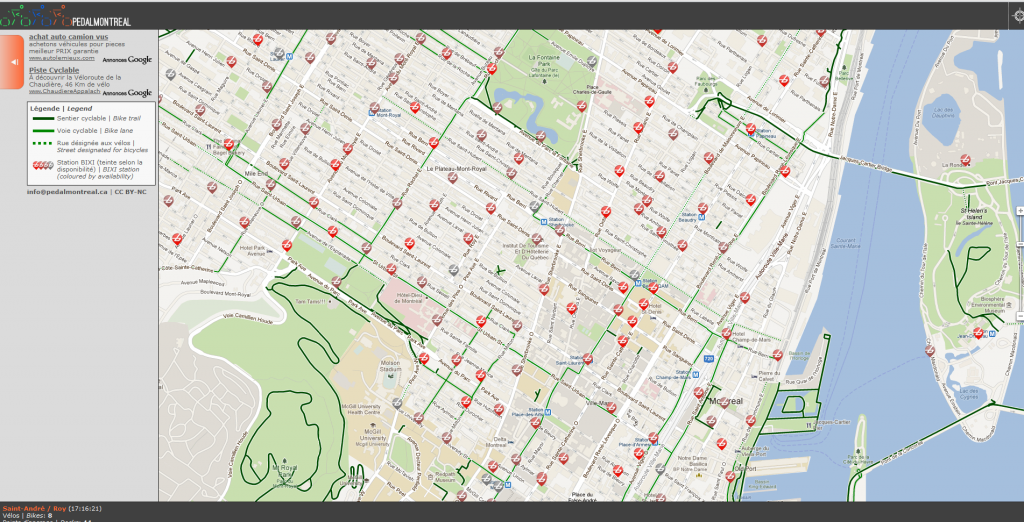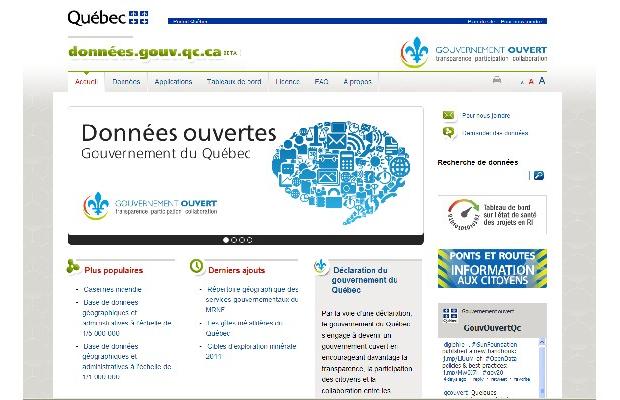The Geoweb (related to open data) depends on open data to remain functional and accurate. This relationship functions in reverse as well, in that the support, use, and maintenance of open data can depend on Geoweb applications. One of the factors that influence public support is the perception of use and accessibility of the data. Without public support, open data projects will neither be funded nor maintained. Geoweb applications allow for practical application of open data that have high utility and value for citizens.
The City of Edmonton is a good example of the utilization of an open data portal as well as Geoweb applications on their website. The main page allows for you to browse various data sites and includes direct links to interactive maps and apps that make use of the data. While it is still very limited in terms of GIS capabilities (it just has some querying capability), it is still a step forward from simply viewing and downloading data. The City of Edmonton’s data portal development was commissioned to the open data platform company Socrata (the portal can be found here: https://data.edmonton.ca/).
There is statistical data that emphasizes the importance of the relationship between Geoweb and open data in a survey that was conducted in 2010 by Socrata. This company conducted an online survey of a total of 1000 citizens, a number of developers, and also municipal governments in the United States over a three month period in 2010 (http://www.socrata.com/benchmark-study). The results delivered a picture of the state of open data in the United States along with factors influencing success present and future.
The survey confirms that transparency, accountability and public participation in government are important to citizens, and consequently to governments who value public opinion. Governments who recognize that open data can affect the daily lives of citizens, and that this motivated them to initiate an open data project were in the majority of those surveyed (see Socrata Benchmark Study). Also, open data projects encouraged a positive attitude towards politicians and government as 61.0% of citizens surveyed, stated that they are more likely to vote for a politician who supports the development of Open Data and 56.3% stated they would trust their governments more if they made most of their data available online. These two factors alone show that citizens have a progressive mindset with regards to open data and that this is something that citizens want from their government. Government employees who were surveyed showed a much greater support for open data than citizens, 92.6% believed that public data should be made accessible online, 91% believed government data is public taxpayer property and should be made available free to all citizens.
The motivation and the support exist internally and externally, all that is missing is a standardization or organization for governments to allocate more resources to developing these projects.
The largest obstacle, according to the study, was lack of leadership from within the government to launch or to organize themselves for development. The survey showed that the greatest motivation for open data initiatives at the Federal level was compliance to legislation or executive mandate. Mandates and regulation works for getting the ball rolling, overcoming the obstacle of ground up initiative, and so more of it needs to be seen to get smaller departments and organizations up to speed. Thus the challenge to governments at all levels is to close the gap between the early and late adopters. One solution may be public awareness. The survey recorded that more than 60% of citizens surveyed did not have awareness of open data initiatives from their governments at all, which means that the majority of people don’t even know that open data is available to them. Getting the open data portals more exposure would lead to greater expectations and pressure from members of the public to increase the capacity, quality and development of open data. Citizens must know that there is a value to this data, and public awareness is a more complicated issue when not every citizen understands the benefits of it.
The success of a data portal then, and the success of its exposure to citizens, depends greatly on the ease of use to citizens, beyond being downloadable and readable. According to the information collected:
With respect to accessing data, citizens, by a 3 to 1 margin, prefer exploring and interacting with data online (63%) to downloading it in a spreadsheet (16%). As a matter of fact, downloading data, which is currently the most prevalent consumption method of government data ranked much lower than browsing pre-made visualizations (37%) or data discovery through social interactions and community feedback (29%). (Socrata Benchmark Study 2010).
Synthesized, organized and utilized information is more attractive to users than raw data alone and therefore has greater value and utility. Development of Geoweb applications need to be encouraged by governments or citizen groups through hackathons or other incentives in order to address the problem of both awareness with respect to the existence of the data portals, its utility to citizens and for governments making the budgets, the dollar-for-dollar value to invest in maintenance of the projects and increase funding and/or support.
Another important issue and obstacle, is that the data that is available is often not deemed to be sufficient by developers to produce Geoweb applications, and thus data quality needs to be addressed in priority. Without voluntary developers for the Geoweb applications, development of Geoweb becomes expensive to governments and is also less efficient. Greater than 50% of developers surveyed do not believe that the data available is sufficient to develop a wide range of functional apps. More specifically, the needs identified by developers surveyed for efficient use of data were the right data (56.7%), open API (50%) and access to meta data, data quality (46.7%).
The Geoweb and open data have evolved to be dependent on one another for success, and the development of Geoweb applications is a key factor in the success of open data projects for governments. Regulation, public awareness, and data quality are amongst many variables that must be addressed by governments, and functional and valuable Geoweb applications can ease this for them.
To view the Socrata Benchmark Survey results, visit https://benchmarkstudy.socrata.com/. The written report is downloadable upon request at http://www.socrata.com/benchmark-study/

